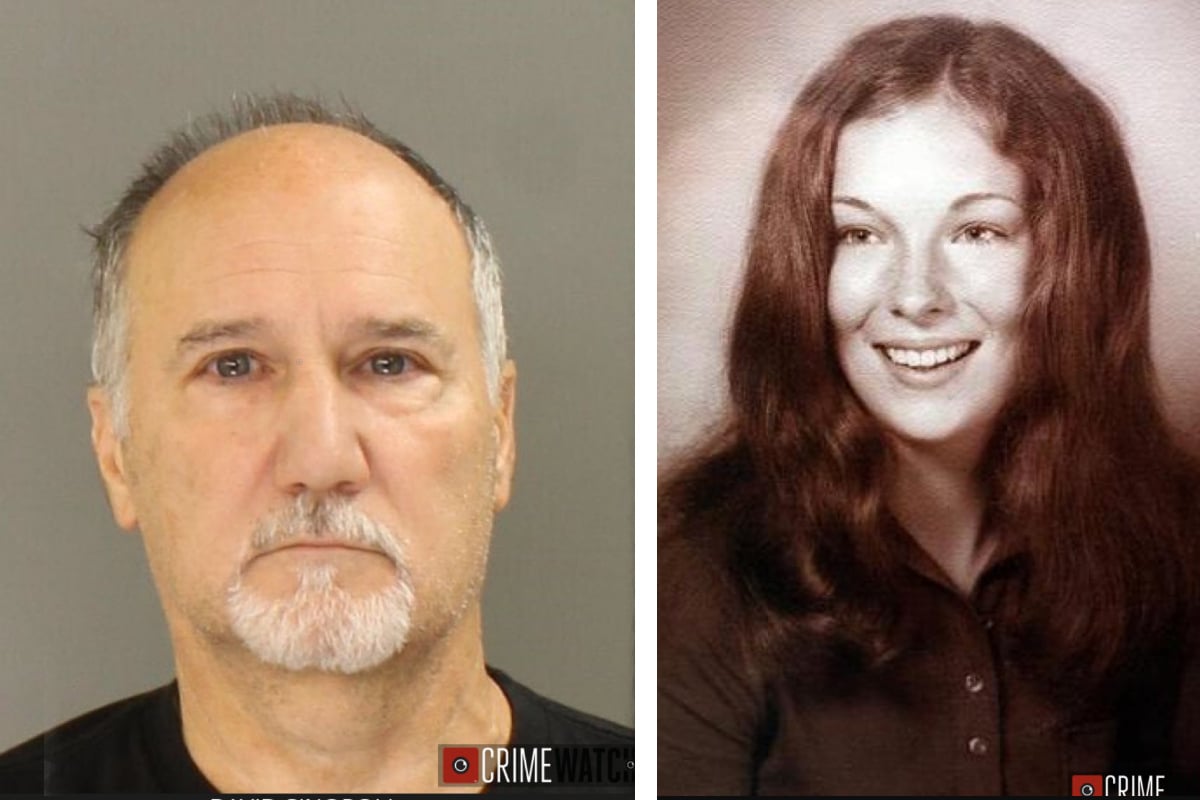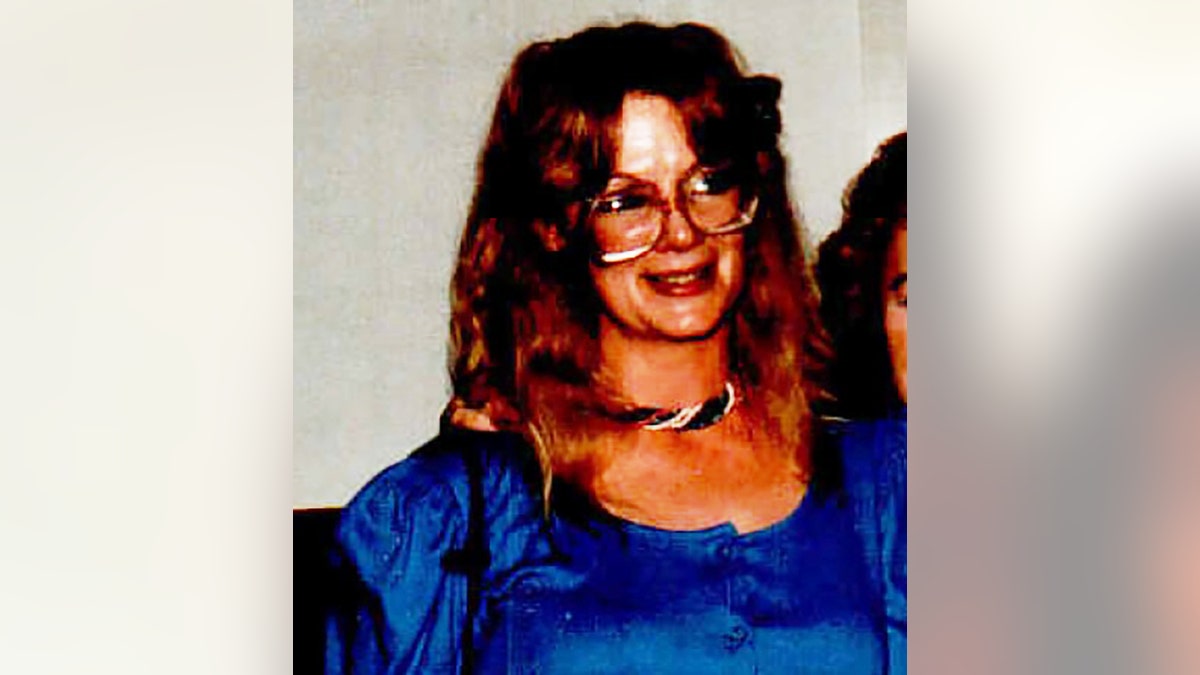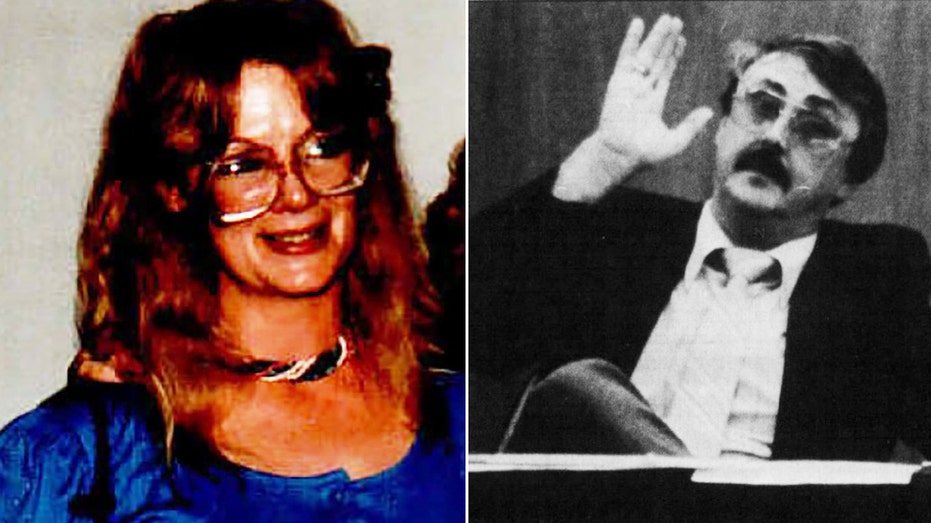Margie Coffey Murder: The Case Of Charles Oswalt And The Fight For Justice
Margie Coffey Murder Charles Oswalt Is Free refers to the killing of Margie Coffey by Charles Oswalt, a case that shocked the nation and sparked a debate about the justice system.
This case highlights the complexities of the criminal justice system and the importance of due process. It also raises questions about the role of the media in shaping public opinion and the impact of wrongful convictions.
In the years since Charles Oswalt's release, there have been significant developments in forensic science and the way that cases are investigated and prosecuted. These changes have led to a number of wrongful convictions being overturned, raising concerns about the accuracy of the criminal justice system.
Margie Coffey Murder
The murder of Margie Coffey and the subsequent trial and release of Charles Oswalt highlight several key aspects of the criminal justice system, due process, and the role of the media.
- Wrongful convictions
- Forensic science
- Public opinion
- Media bias
- Due process
- Criminal justice reform
- The death penalty
- The right to a fair trial
- The presumption of innocence
These aspects are all interconnected and play a role in ensuring that the criminal justice system is fair and accurate. When one or more of these aspects is compromised, it can lead to wrongful convictions and other miscarriages of justice.
Charles Oswalt
| Full name | Charles Ray Oswalt |
| Date of birth | November 22, 1954 |
| Place of birth | Fort Worth, Texas |
| Occupation | Carpenter |
| Relationship to Margie Coffey | Acquaintance |
| Convicted of | Murder of Margie Coffey |
| Date of conviction | 1987 |
| Sentence | Death |
| Date of release | 2020 |
Wrongful convictions
A wrongful conviction occurs when a person is convicted of a crime they did not commit. Wrongful convictions can have a devastating impact on the lives of those convicted, their families, and the community. They can also undermine public trust in the criminal justice system.
The case of Margie Coffey and Charles Oswalt is a prime example of a wrongful conviction. Oswalt was convicted of murdering Coffey in 1987 and sentenced to death. He spent 33 years in prison before being exonerated in 2020.
There are many factors that can contribute to wrongful convictions, including:
- False or misleading eyewitness testimony
- Faulty forensic evidence
- Prosecutorial misconduct
- Inadequate defense
- Bias
In the case of Charles Oswalt, it is believed that false or misleading eyewitness testimony played a major role in his wrongful conviction. Several witnesses claimed to have seen Oswalt at the scene of the crime, but their testimony was later found to be unreliable.
The Margie Coffey murder case highlights the importance of due process and the right to a fair trial. It also shows that wrongful convictions can happen even in the most high-profile cases.
Forensic science
Forensic science played a critical role in the Margie Coffey murder case and the subsequent exoneration of Charles Oswalt. Forensic evidence was used to convict Oswalt of murder in 1987, but advances in forensic science later helped to prove his innocence.
One of the key pieces of evidence used to convict Oswalt was a bite mark on the victim's body. At the time, bite mark analysis was considered to be a reliable form of forensic evidence. However, subsequent research has shown that bite mark analysis is not as reliable as once thought. In fact, many experts now believe that bite mark analysis is not a valid form of forensic evidence at all.
In Oswalt's case, the bite mark evidence was used to link him to the crime scene. However, after he was exonerated, new DNA testing showed that the bite mark did not match Oswalt's DNA. This new evidence helped to prove Oswalt's innocence and led to his release from prison.
The Margie Coffey murder case is a prime example of how forensic science can be used to both convict and exonerate individuals. It also shows that forensic science is not always as reliable as we think. As forensic science continues to evolve, it is important to be aware of the limitations of this field and to use forensic evidence cautiously.
Public opinion
Public opinion is a powerful force that can influence the outcome of criminal cases. In the case of Margie Coffey and Charles Oswalt, public opinion played a significant role in both Oswalt's conviction and his eventual exoneration.
- Media coverage
The media plays a major role in shaping public opinion. In the case of Margie Coffey and Charles Oswalt, the media coverage of the case was largely negative and sensationalistic. This coverage helped to create a public perception of Oswalt as a guilty man, even before he had been convicted of a crime.
- Community outrage
The murder of Margie Coffey was a horrific crime that shocked the community. This outrage led to demands for justice and a swift resolution to the case. This pressure may have influenced the police and prosecutors to rush to judgment and convict Oswalt without a thorough investigation.
- Prejudice
Prejudice can also influence public opinion. In the case of Margie Coffey and Charles Oswalt, Oswalt was a black man accused of murdering a white woman. This racial dynamic may have contributed to the public's perception of Oswalt as guilty.
- Changing attitudes
Public opinion can change over time. In the case of Margie Coffey and Charles Oswalt, advances in forensic science and the tireless efforts of Oswalt's supporters led to a growing belief that Oswalt was innocent. This change in public opinion eventually led to Oswalt's exoneration.
The case of Margie Coffey and Charles Oswalt is a reminder that public opinion is a powerful force that can influence the outcome of criminal cases. It is important to be aware of the potential impact of public opinion and to ensure that our criminal justice system is fair and impartial.
Media bias
Media bias is a serious problem that can have a significant impact on the outcome of criminal cases. In the case of Margie Coffey and Charles Oswalt, media bias played a major role in Oswalt's wrongful conviction.
- Sensationalism
The media often focuses on sensational stories that will attract viewers and readers. This can lead to a distorted view of the facts and can make it difficult for people to form an informed opinion about a case.
- Bias
The media is often biased in favor of the prosecution. This can be due to a variety of factors, including the fact that prosecutors are often more willing to talk to the media than defense attorneys. This bias can make it difficult for people to get a fair and impartial view of a case.
- Prejudice
The media can also be biased against certain groups of people, such as minorities and the poor. This can lead to unfair coverage of crimes involving these groups.
- Lack of context
The media often fails to provide context for the crimes it reports on. This can make it difficult for people to understand the motivations of the people involved and to make informed judgments about the case.
Media bias is a serious problem that can have a significant impact on the criminal justice system. It is important to be aware of media bias and to be critical of the information that you consume. You should also seek out information from a variety of sources in order to get a more complete and accurate picture of a case.
Due process
Due process is a fundamental principle of the criminal justice system that guarantees fair and impartial treatment to individuals accused of crimes. In the case of Margie Coffey and Charles Oswalt, due process was violated in several ways, leading to Oswalt's wrongful conviction.
- Right to a fair trial
Oswalt was not provided with a fair trial. He was denied access to a competent attorney, and the prosecution withheld evidence that could have exonerated him.
- Right to be presumed innocent
Oswalt was presumed guilty from the start. The media portrayed him as a monster, and the prosecution presented a case that was based on speculation and innuendo.
- Right to confront witnesses
Oswalt was not allowed to confront the witnesses against him. The prosecution was allowed to present hearsay evidence, and Oswalt was not able to cross-examine the witnesses who testified against him.
- Right to a speedy trial
Oswalt's trial was delayed for several years. This delay gave the prosecution time to build its case and made it more difficult for Oswalt to defend himself.
The violations of due process in the Margie Coffey murder case led to a miscarriage of justice. Oswalt spent 33 years in prison for a crime he did not commit. His case is a reminder that due process is essential to a fair and impartial criminal justice system.
Criminal justice reform
The case of Margie Coffey and Charles Oswalt highlights several areas where criminal justice reform is needed. These include:
- Wrongful convictions
Oswalt was wrongfully convicted of murder and spent 33 years in prison before being exonerated. This case shows that the criminal justice system is not always accurate and that innocent people can be convicted of crimes they did not commit.
- Forensic science
The bite mark evidence used to convict Oswalt was later found to be unreliable. This case shows that forensic science is not always as reliable as we think and that it can be used to convict innocent people.
- Public opinion
The media coverage of the Margie Coffey murder case created a public perception of Oswalt as a guilty man, even before he had been convicted of a crime. This case shows that public opinion can influence the outcome of criminal cases and that it is important to be aware of media bias.
- Due process
Oswalt's due process rights were violated in several ways, including his right to a fair trial and his right to confront witnesses. This case shows that due process is essential to a fair and impartial criminal justice system.
The case of Margie Coffey and Charles Oswalt is a reminder that the criminal justice system is in need of reform. We need to take steps to prevent wrongful convictions, improve the reliability of forensic science, reduce the influence of public opinion, and ensure that due process is protected.
The death penalty
The death penalty is a highly controversial topic that has been debated for centuries. Supporters of the death penalty argue that it is a just punishment for certain crimes, while opponents argue that it is cruel and unusual punishment and that it does not deter crime. The death penalty is legal in 27 states, but its use has been declining in recent years.
The case of Margie Coffey and Charles Oswalt is a prime example of the controversy surrounding the death penalty. Oswalt was convicted of murdering Coffey in 1987 and sentenced to death. He spent 33 years on death row before being exonerated in 2020. Oswalt's case is one of many that have raised concerns about the fairness and accuracy of the death penalty.
There are a number of arguments against the death penalty. One argument is that it is cruel and unusual punishment. The death penalty is the only form of punishment that is irreversible. If an innocent person is executed, there is no way to bring them back. Another argument against the death penalty is that it does not deter crime. Studies have shown that the death penalty does not deter crime any more effectively than other forms of punishment.
There are also a number of practical problems with the death penalty. One problem is that it is very expensive. The cost of executing a single prisoner is much higher than the cost of imprisoning them for life. Another problem is that the death penalty is often applied in a discriminatory manner. Studies have shown that people of color and the poor are more likely to be sentenced to death than white people and the wealthy.
The case of Margie Coffey and Charles Oswalt is a reminder that the death penalty is a flawed and unjust punishment. It is time to abolish the death penalty and replace it with a more humane and effective form of punishment.
The right to a fair trial
The right to a fair trial is a fundamental principle of the American criminal justice system. It is guaranteed by the Sixth Amendment to the U.S. Constitution, which states that "In all criminal prosecutions, the accused shall enjoy the right to a speedy and public trial, by an impartial jury, and to be informed of the nature and cause of the accusation; to be confronted with the witnesses against him; to have compulsory process for obtaining witnesses in his favor; and to have the Assistance of Counsel for his defense."
The right to a fair trial is essential to ensure that the innocent are not convicted of crimes they did not commit. It also helps to protect the guilty from being punished too severely. In the case of Margie Coffey and Charles Oswalt, the right to a fair trial was violated in several ways.
Oswalt was not provided with a competent attorney. His attorney failed to investigate the case properly and did not present any evidence in Oswalt's defense. The prosecution was allowed to present hearsay evidence, and Oswalt was not able to cross-examine the witnesses who testified against him. These violations of Oswalt's due process rights led to his wrongful conviction.
Oswalt's case is a reminder that the right to a fair trial is not something that we can take for granted. It is a right that must be constantly defended and protected.
The presumption of innocence
The presumption of innocence is a fundamental principle of the American criminal justice system. It is based on the idea that every person is innocent until proven guilty in a court of law. This principle is enshrined in the Fifth Amendment to the U.S. Constitution, which states that no person "shall be deprived of life, liberty, or property, without due process of law."
- Burden of proof
The burden of proof in a criminal case rests with the prosecution. The prosecution must prove beyond a reasonable doubt that the defendant is guilty of the crime charged. The defendant does not have to prove their innocence.
- Right to remain silent
The Fifth Amendment also gives defendants the right to remain silent. This means that defendants cannot be compelled to testify against themselves. The prosecution cannot draw an adverse inference from the defendant's silence.
- Right to a fair trial
The Sixth Amendment guarantees defendants the right to a fair trial. This includes the right to an impartial jury, the right to be represented by an attorney, and the right to confront witnesses.
- Presumption of innocence in the media
The presumption of innocence applies not only in the courtroom but also in the media. The media should not portray defendants as guilty before they have been convicted.
The presumption of innocence is a vital part of the American criminal justice system. It helps to ensure that innocent people are not convicted of crimes they did not commit. It also helps to protect the rights of the accused.
The wrongful conviction of Charles Oswalt in the murder of Margie Coffey highlights several key issues within the criminal justice system. First, it demonstrates the need for reform in the use of forensic evidence, particularly in cases that rely heavily on bite mark analysis. Second, it underscores the importance of due process and the right to a fair trial, as Oswalt's conviction was based on unreliable evidence and a lack of access to competent legal counsel.
The case also raises questions about the role of the media in shaping public opinion and the potential for bias to influence the outcome of criminal trials. Ultimately, the wrongful conviction of Charles Oswalt serves as a reminder of the fragility of justice and the need for constant vigilance in protecting the rights of the accused.

DNA on a coffee cup leads to arrest in 1975 murder

Ohio woman's murder revisited 35 years later by crime scene

Revisiting Ohio Woman's Murder 35 Years Later